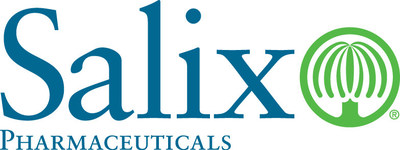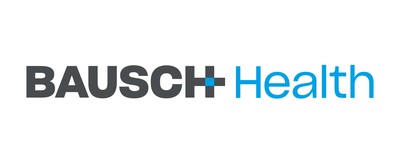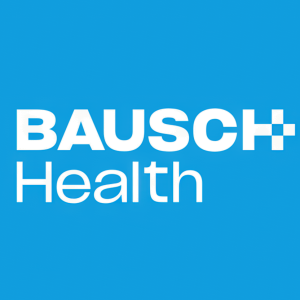New Report Reveals Barriers To Quality Care For Chronic Liver Disease Patients, A Cause Of Morbidity And Mortality Projected To Grow In The United States
Bausch Health and its subsidiary Salix Pharmaceuticals released the Liver Health Annual Trends Report, highlighting critical gaps in chronic liver disease (CLD) care in the U.S. The report surveyed 100 healthcare providers, revealing that 38% are unaware of CLD management guidelines. An alarming 51% do not follow current American Association for the Study of Liver Diseases (AASLD) guidelines. CLD affects approximately 4.5 million Americans, with increasing cases of nonalcoholic fatty liver disease noted. The report emphasizes the urgent need for improved education and adherence to treatment standards.
- Initiative to address chronic liver disease through education and resources.
- Survey highlights the urgent need for standardized treatment guidelines, indicating potential market demand for educational products.
- Growing recognition of nonalcoholic fatty liver disease (NAFLD) and nonalcoholic steatohepatitis (NASH), which could lead to increased market opportunities.
- 51% of healthcare providers do not follow AASLD guidelines, indicating a significant gap in treatment practice.
- 38% of surveyed providers are unaware of national CLD management guidelines, reflecting poor awareness in the field.
- Notable increase in disease severity and hospitalizations among patients, which may indicate worsening public health outcomes.
Salix Pharmaceuticals' First Liver Health Annual Trends Report Highlights Urgent Need for Evidence-Based Guidelines to be Adopted by Physicians
LAVAL, Quebec, Oct. 25, 2021 /PRNewswire/ -- Bausch Health Companies Inc. (NYSE/TSX: BHC) ("Bausch Health") and its gastroenterology (GI) business, Salix Pharmaceuticals ("Salix"), one of the largest specialty pharmaceutical companies in the world committed to the prevention and treatment of gastrointestinal and liver diseases, today released key findings from a survey of health care providers (HCP) treating chronic liver disease (CLD), including potential gaps in prevention and diagnosis efforts. The Liver Health Annual Trends Report, which surveyed 100 physicians active in the management and treatment of CLD, offers facts and trends about CLD in America, a disease that affects an estimated 4.5 million adults in the United States.1
Research indicates that more people aged 25-54 die from CLD and cirrhosis than diabetes or stroke.2 The results of this survey and in-depth interviews of physicians suggest CLD has not received the attention or level of effort needed for adequate prevention, diagnosis, and standardization of its management. This report is designed to shed light on the often asymptomatic disease,3 which can lead to a host of other serious issues including cirrhosis or hepatic encephalopathy (HE).
"Salix is committed to helping HCPs address the growing prevalence of chronic liver disease, cirrhosis and hepatic encephalopathy," explained Robert Spurr, president, Salix. "The demographics of this disease are changing in real time, and the liver health community must come together to understand the latest information, including evidence-based treatment options that provide hope for patients. We are proud to sponsor this new annual report that we hope will generate discussion within the scientific community and underscore the importance of more education around CLD."
Underutilization of American Association for the Study of Liver Diseases (AASLD) Guidelines
Although survey and interview respondents agree that implementing a standardized approach to care would be optimal, they point to the complexity of CLD, socioeconomic issues, and presence of only a few definitive treatment strategies as roadblocks to standardizing care for all CLD patients. Respondents stated that the lack of options means that slowing CLD disease progression may often require patient adherence to behavior changes, which is challenging without adequate education or support.
Additionally, the lack of provider awareness and utilization of treatment guidelines or measures may compound the issue. In the survey, respondents noted improving patient outcomes as a top factor influencing the adoption of CLD guidelines. Despite this,
Findings from the Liver Health Annual Trends Report include:
38% of survey respondents were unaware of or unable to name national guidelines for the management of CLD- Nearly one-fifth (18
-21% ) of survey respondents observed significant increases in CLD patient disease severity and hospitalizations during the last calendar year - Nonalcoholic steatohepatitis (NASH) and nonalcoholic fatty liver disease (NAFLD) combined make up
42% to43% of liver patients among those surveyed, exceeding any other form of CLD included in the survey, including alcohol-related cirrhosis. In-depth interviews revealed that these HCPs expect cases of NASH and NAFLD to increase in prevalence within their practices - Even though alcohol-induced liver disease (ALD) made up less than one-third of the types of liver disease treated by survey respondents, those surveyed listed patient treatment adherence and alcohol and recreational drug use as the top two factors determining patient outcomes
- Survey respondents who participated in in-depth interviews indicated that improving the outcomes of patients with end-stage liver disease is difficult given patients' inability to comply with treatment, alcohol and drug use, and treating more serious acute conditions. According to some respondents, elevating patients' health literacy and making the link between liver health and risk factors are critical elements to managing their disease
"The importance of this first liver health annual trends report cannot be overstated as the foundational element in understanding liver health as public health," notes Donna Cryer, JD, founder, president and CEO, Global Liver Institute. "The provision of accurate information on the underlying determinants of chronic liver disease and the economic, clinical, and social impacts are essential to reducing stigma, promoting health equity, and creating the urgency across the medical community to come together to address the needs of the 4.5 million Americans1 suffering from chronic liver disease and the millions more at risk."
To educate HCPs and patients about CLD and HE, Salix has developed a number of online resources, including:
- UnderstandingHE.com: a patient resource aimed at HE disease awareness and education that provides resources on how to help manage the disease
- LiverHealthNow.com: an educational tool offering HCP-facing resources and information to help identify, manage and effectively transition patients with CLD
- UnseenEpisodes.com: an HCP-facing educational resource aimed at exploring the unseen aspects and considerations in managing patients with HE
The complete findings from Salix's Liver Health Annual Trends Report can be viewed at liverhealthnow.com/trendsreport-view.
About the Methodology Behind Liver Health Annual Trends Report
The Liver Health Annual Trends Report on chronic liver disease (CLD) includes information collected from an online survey, qualitative telephone interviews and secondary research from peer-reviewed journals. An independent third-party recruiting firm surveyed 100 physicians between July 21 and Aug. 5, 2020. Physician participation in the survey required individuals to be active in clinical practice and treat greater than 4 CLD patients annually. Subgroups of the survey respondents included the following:33 specialists, 33 hospital-based physicians and 34 primary care physicians. In addition to completing the online survey, 15 physicians also completed in-depth telephone interviews. As it pertains to the online survey, analysis of the data was conducted by utilizing QPSMR data analysis software and calculating statistical significance at
This trends report strives to be representative of all physician segments' lived experience and the diversity that exists within the United States with respect to patient management and the economic and social factors that impact the management of CLD patients.
Secondary Research
Secondary research was conducted utilizing Google and PubMed searches to identify relevant peer-reviewed references and sources as noted in the report. Furthermore, treatment utilization and claims data were sourced from IQVIA.
About Salix
Salix Pharmaceuticals is one of the largest specialty pharmaceutical companies in the world committed to the prevention and treatment of gastrointestinal diseases. For more than 30 years, Salix has licensed, developed and marketed innovative products to improve patients' lives and arm health care providers with life-changing solutions for many chronic and debilitating conditions. Salix currently markets its product line to U.S. health care providers through an expanded sales force that focuses on gastroenterology, hepatology, pain specialists and primary care. Salix is headquartered in Bridgewater, New Jersey. For more information about Salix, visit www.Salix.com and connect with us on Twitter and LinkedIn.
About Bausch Health
Bausch Health Companies Inc. (NYSE/TSX: BHC) is a global company whose mission is to improve people's lives with our health care products. We develop, manufacture and market a range of pharmaceutical, medical device and over-the-counter products, primarily in the therapeutic areas of eye health, gastroenterology, and dermatology. We are delivering on our commitments as we build an innovative company dedicated to advancing global health. For more information, visit www.bauschhealth.com and connect with us on Twitter and LinkedIn.
Forward-looking Statements
This news release may contain forward-looking statements, which may generally be identified by the use of the words "anticipates," "hopes," "expects," "intends," "plans," "should," "could," "would," "may," "believes," "estimates," "potential," "target," or "continue" and variations or similar expressions. These statements are based upon the current expectations and beliefs of management and are subject to certain risks and uncertainties that could cause actual results to differ materially from those described in the forward-looking statements. These risks and uncertainties include, but are not limited to, the risks and uncertainties discussed in the Bausch Health's most recent annual report on Form 10-K and detailed from time to time in Bausch Health's other filings with the U.S. Securities and Exchange Commission and the Canadian Securities Administrators, which factors are incorporated herein by reference. They also include, but are not limited to, risks and uncertainties caused by or relating to the evolving COVID-19 pandemic, and the fear of that pandemic and its potential effects, the severity, duration, and future impact of which are highly uncertain and cannot be predicted, and which may have a material adverse impact on Bausch Health, including but not limited to its project development timelines, and costs (which may increase). Readers are cautioned not to place undue reliance on any of these forward-looking statements. These forward-looking statements speak only as of the date hereof. Bausch Health undertakes no obligation to update any of these forward-looking statements to reflect events or circumstances after the date of this news release or to reflect actual outcomes, unless required by law.
References
1. Centers for Disease Control and Prevention. Chronic liver disease and cirrhosis. Accessed July 2, 2021. https://www.cdc.gov/nchs/fastats/liver-disease.htm
2. Murphy S, Xu J, Kochanek KD, et al. Deaths: final data for 2018. Natl Vital Stat Rep. 2021;69(13):1-82.
3. National Institute of Diabetes and Digestive and Kidney Diseases. Definition & facts for cirrhosis. https://www.niddk.nih.gov/health-information/liver-disease/cirrhosis/definition-facts. Accessed July 27, 2021.
SAL.0139.USA.21
©2021 Salix Pharmaceuticals or its affiliates.
Investor Contact: | Media Contact: |
Arthur Shannon | Lainie Keller |
(514) 856-3855 | (908) 927-1198 |
(877) 281-6642 (toll free) |
![]() View original content to download multimedia:https://www.prnewswire.com/news-releases/new-report-reveals-barriers-to-quality-care-for-chronic-liver-disease-patients-a-cause-of-morbidity-and-mortality-projected-to-grow-in-the-united-states-301406751.html
View original content to download multimedia:https://www.prnewswire.com/news-releases/new-report-reveals-barriers-to-quality-care-for-chronic-liver-disease-patients-a-cause-of-morbidity-and-mortality-projected-to-grow-in-the-united-states-301406751.html
SOURCE Bausch Health Companies Inc.
FAQ
What are the key findings of BHC's Liver Health Annual Trends Report?
How many Americans are affected by chronic liver disease according to the report?
What challenges do healthcare providers face in managing chronic liver disease?
What is the significance of NAFLD and NASH in the context of liver disease?









